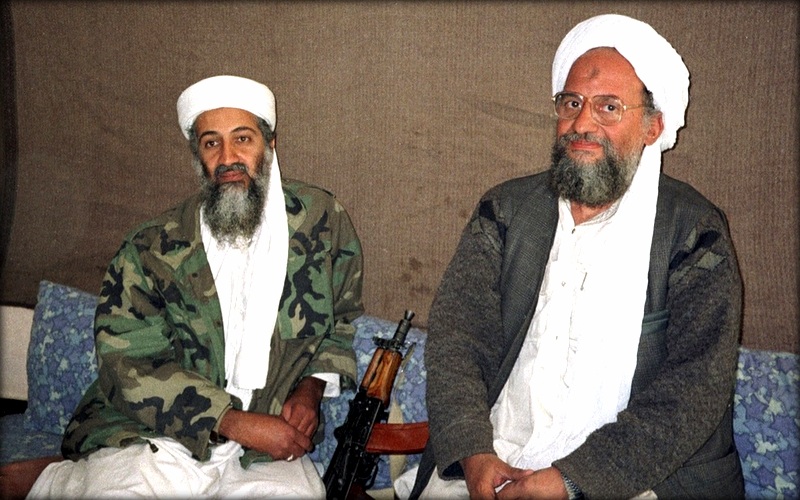Bin Laden and the Affiliates: The Evidence of the Abbottabad Documents (Part One)

A few weeks ago, documents seized during the 2011 raid that killed Usama Bin Ladin were released to the public for the first time. While only a tiny fraction of the total number captured in Abbottabad, the newly available documents offer a rare opportunity to reexamine a series of assumptions and conclusions about al-Qaeda (AQ), Bin Laden, and the U.S. war with AQ.
The document collection seized in Abbottabad was immense: according to news reports, a total of 2.7 terabytes of material and “millions of documents” were taken by American special forces after Bin Ladin was killed. In May 2012, just seventeen of these documents, and an analysis of their contents, were published by the Countering Terrorism Center (CTC) at West Point. The new publication of eight more documents brings the total number of available records from the Abbottabad treasure trove to 25. Any conclusions about al-AQ or Bin Laden based on these few documents must, of necessity be modest. However, it is already clear that the eight new pieces of evidence will help to clarify and correct some misconceptions fostered by the first seventeen documents.
In particular, the new documents show that three findings of the CTC report, outside experts, and government officials need revision: that AQ’s central leadership had little control over the so-called “affiliates”; that Bin Laden was out of touch and perhaps even delusional; and that there were no direct contacts between AQ and Pakistani authorities. I’ll cover the last two in following posts, but today I’ll look at the first issue: what do the documents say about the relationship between the leadership of AQ and the groups generally known as “affiliates”?
According to the 2012 CTC study, the earlier seventeen documents show:
…the relationship between what has been labeled “al-Qa`ida Central” (AQC) under the leadership of Bin Ladin is not in sync on the operational level with its so-called “affiliates.” Bin Ladin enjoyed little control over either groups affiliated with al-Qa`ida in name (e.g., AQAP or AQI/ISI) or so-called “fellow travelers” such as the TTP.
In their deeper analysis, the authors of the study focus on Document 19 and Bin Laden’s emphasis on protecting Muslim lives to conclude that the leader struggled to have “even a minimal influence” over the affiliates. Expert opinion and statements by government officials have supported this conclusion, with many agreeing that Bin Ladin—or his successor, Zawahiri—have had little or no control over the affiliates.
Even looking solely at this particular issue and document, CTC’s analysis has failed the test of time. Developments over the last four years have shown that Bin Laden’s emphasis on guarding Muslim lives has become the standard policy of AQ affiliates around the world. Evidence for this includes the uniform language used by every AQ affiliate or branch and the actions taken by branches like the Shabaab al-Mujahideen Movement, all of which show that AQ leadership’s direction on this point has indeed been followed by the affiliates.
 The new documents offer further evidence that the original analysis by CTC on the relationship between the affiliates and AQ leadership needs to be modified. One of them (Exhibit 423), is a letter from 'Atiyya Abd al-Rahman, sometimes described as AQ’s “chief of staff,” replying to Document 19. In that document, Bin Laden had talked about the need for al-Qaeda in the Arabian Peninsula (AQAP) to focus on attacking America rather than “escalating” the battle with the local leaders of Yemen. AQ experts have used this recommendation to prove that Bin Laden was incapable of controlling AQAP, since the group’s actions “stood in direct contradiction to Bin Ladin’s guidance.” AQAP in fact continued its attacks on the Yemeni government, eventually seizing large swaths of territory in the south of the country in 2011. This apparent contradiction is explained in the new document. Here ‘Atiyya, while respectful toward his boss, explains that he and other “brothers” believe it is better to engage in the fight against the Yemeni government and suggests the creation of a general strategy to pursue this course.
The new documents offer further evidence that the original analysis by CTC on the relationship between the affiliates and AQ leadership needs to be modified. One of them (Exhibit 423), is a letter from 'Atiyya Abd al-Rahman, sometimes described as AQ’s “chief of staff,” replying to Document 19. In that document, Bin Laden had talked about the need for al-Qaeda in the Arabian Peninsula (AQAP) to focus on attacking America rather than “escalating” the battle with the local leaders of Yemen. AQ experts have used this recommendation to prove that Bin Laden was incapable of controlling AQAP, since the group’s actions “stood in direct contradiction to Bin Ladin’s guidance.” AQAP in fact continued its attacks on the Yemeni government, eventually seizing large swaths of territory in the south of the country in 2011. This apparent contradiction is explained in the new document. Here ‘Atiyya, while respectful toward his boss, explains that he and other “brothers” believe it is better to engage in the fight against the Yemeni government and suggests the creation of a general strategy to pursue this course.
We thus have, for the first time, three sequential letters from and to Bin Ladin and ‘Atiyya...allowing us to follow the course of debates on a variety of issues.
We can now see that Document 3 from the earlier CTC document release is Bin Laden’s follow-up to Exhibit 423. We thus have, for the first time, three sequential letters from and to Bin Ladin and ‘Atiyya (Document 19—Exhibit 423—Document 3), allowing us to follow the course of debates on a variety of issues. In Document 3, Bin Ladin takes on board ‘Atiyya’s proposal and requests further analysis so that it will be possible to decide whether to “escalate or calm down” the situation in Yemen. He tasks three high-ranking officials—Wuhayshi (the head of AQAP), Anwar al-Awlaqi, and the deputy head of AQAP (Sa’id al-Shahri)—to write up their visions for Yemen and send them on to him. While we do not have any further documentary evidence, it is obvious from events that the proposal by ‘Atiyya and other AQ leaders won out: war would be waged against both the Americans and the Yemeni government.
A second new document (Exhibit 421), again a letter from ‘Atiyya to Bin Ladin, adds another dimension to our understanding of the relationship between the affiliates and AQ leadership. Here ‘Atiyya notes that the “brothers in Algeria,” almost certainly al-Qaeda in the Islamic Maghrib (AQIM), were considering a truce with the Algerian government, but were waiting for guidance from the leadership before proceeding. This is not the only instance of ‘Atiyya asking Bin Laden for guidance: Exhibits 421 and 423 are replete with requests for directives on a wide variety of issues. The “brothers in Somalia” in this document, as well as Exhibit 423 are, for instance, were described as waiting for a decision from Bin Laden before taking action (on an unspecified matter). The clear implication in both documents is that the affiliates viewed AQ leadership as their command and would not act without guidance from above.
Taken as a whole, the new documents thus present a very different relationship between AQ “core” and the affiliates from that described in the earlier CTC analysis and in statements by experts and government officials. Although Bin Laden is not depicted as an absolute dictator and seemed to have consistently relied on input from his staff, the leadership of AQ is portrayed as clearly in charge of the branches. In fact, it seems that the leader was constantly being bombarded with requests for more guidance from the group’s regional affiliates. In my next post, I’ll examine more closely the role that Bin Laden, and thus Zawahiri, actually play in the AQ organization.
